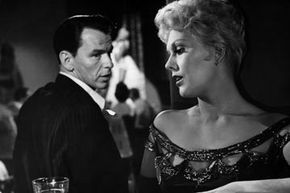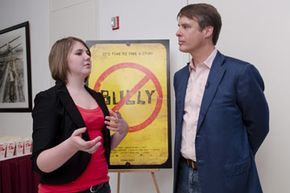Even if you think you don't know much about the Motion Picture Association of America (MPAA), you do. This is the organization responsible for movie ratings.
It created the ubiquitous letter system -- G, PG, PG-13, R, and NC-17 -- and hands down the ratings through an anonymous rating board. But the MPAA also represents the movie studios in their battle against intellectual property theft, particularly the use of peer-to-peer file sharing to distribute pirated copies of movies.
Advertisement
The Motion Picture Association of America (MPAA) is a powerful, influential and often controversial trade organization representing all of the major American movie studios. It was formed in 1922 as a way of protecting movie studios against overzealous censorship boards. Back then, every state and many cities had their own censorship boards that could ban movies for local distribution on grounds of "immorality" [source: MPAA].
The MPAA's first president, Will Hays, sought to avoid government censorship by encouraging the movie industry to police itself. Hays helped develop the production code, a strict list of moral do's and don'ts -- no passionate kissing, no drug use, no criticisms of religion -- that the MPAA used to stamp films as "moral" or "immoral" [source: MPAA]. Failure to pass the "Hays Code" meant studios wouldn't distribute the film. Threatened with financial ruin, filmmakers toed the line, at least for a while.
By the 1950s, the taste of postwar movie audiences had matured beyond the Hays Code restrictions. Frank Sinatra received an Oscar nomination for his role as a heroin addict in "The Man With the Golden Arm," a movie that failed to get MPAA approval, but was booked by theaters based on good reviews [source: Mondello]. By the time "Some Like It Hot" debuted in 1959, no one cared that the cross-dressing comedy didn't pass the production code. It was still a box-office smash. The MPAA and its code needed to evolve with the times.
The stakes grew higher with the 1968 Supreme Court decision in Ginsberg v. New York, which ruled that states could "adjust the definition of obscenity as applied to minors" [source: Justia]. Worried that the ruling could revive the idea of local censorship boards, new MPAA chief Jack Valenti conceived of the voluntary ratings system [source: Breznican]. Under the self-policing system, filmmakers would submit movies to the MPAA for a rating of G, PG, R or X. Even though the ratings carried no legal authority, parents could use the MPAA rating as a guide in deciding what movies to see with their children.
Keep reading for more details on how the MPAA rating system works.
Advertisement





